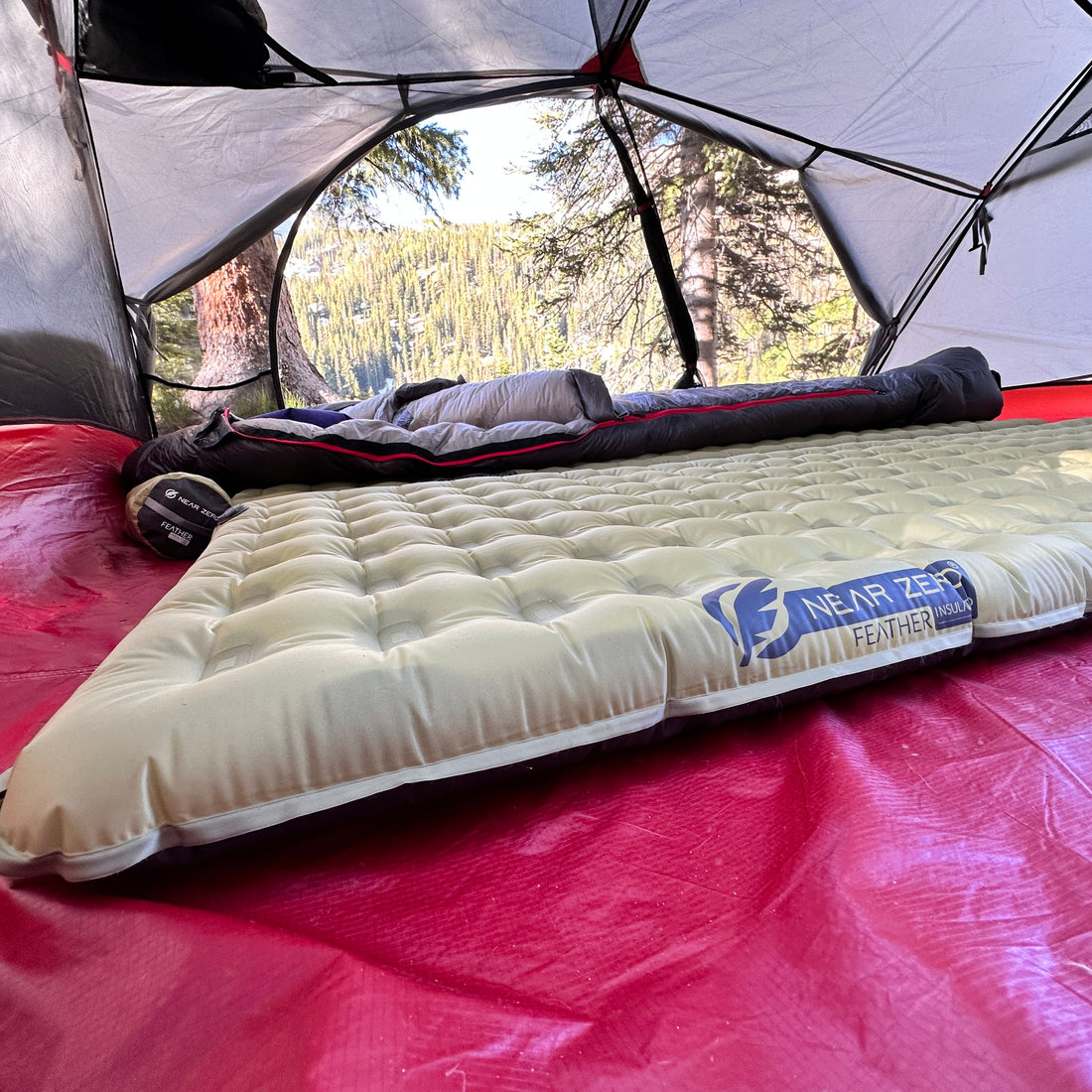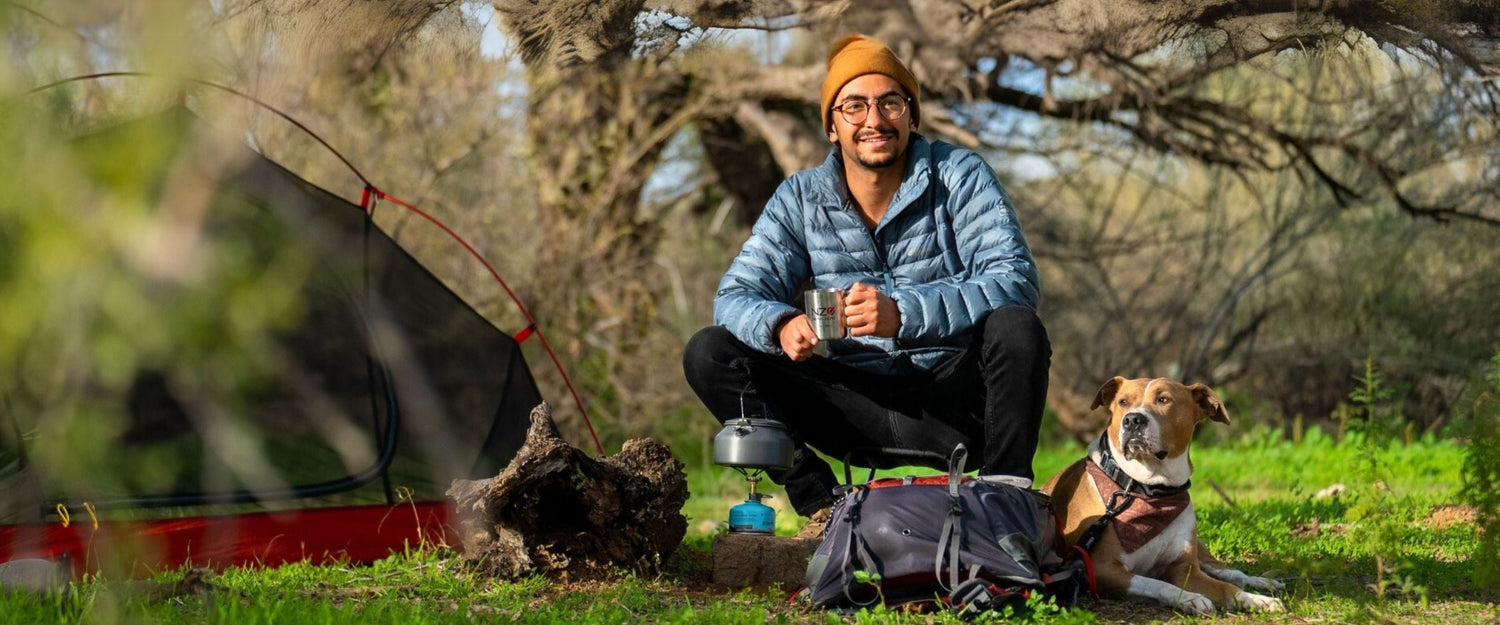
Hibernation Mode: The Ultimate Guide to Storing Your Camping Gear
As the leaves turn and temperatures drop, many outdoor enthusiasts start winding down their camping and hiking trips for the season. But before you put your Near Zero or other camping gear into storage for the winter, it's essential to pack it up properly to ensure it stays in good condition and is ready for your next adventure, whether it’s another impromptu trip or warmer weather camping. Here are expert tips on how to prepare your camping equipment for hibernation.
1. Clean Everything Thoroughly
Before storing your gear, it’s crucial to clean each piece to prevent mold, mildew, or lingering odors.
- Tents: Set up your tent one last time and wipe down the interior and exterior. Use a mild soap and water solution to wash away any debris, and before you roll it up, ensure it’s completely dry to avoid mold. For more detailed instructions, check out our blog.
- Sleeping Bags and Pads: Air out your sleeping bag and wash it according to the manufacturer’s instructions. Store it loosely in a large sack instead of compressing it, which helps preserve its loft. For more detailed instructions, check out our blog.
- Cooking Gear: Clean your cookware and utensils thoroughly. For stoves, ensure there’s no leftover fuel and wipe down the components to prevent rust or build-up.
2. Repair Any Damage
Take the time to inspect your gear for wear and tear. It’s better to address small issues now rather than discovering them on your first trip next season.
- Tents and Tarps: Check for holes, tears, or broken zippers. Most minor tears can be fixed with patches, while broken poles can often be replaced.
- Sleeping Pads: Check for leaks and repair them using a patch kit. Near Zero’s sleeping pad comes with a repair kit to make this step easier.
- Backpacks: Inspect the straps and buckles, and make any necessary repairs now, so you don’t have to scramble before your next adventure.
3. Store Gear in a Dry, Cool Place
Proper storage is key to keeping your gear in top shape over the winter.
- Tents and Sleeping Bags: Keep your tent in a breathable storage sack instead of stuffing it tightly into its compression sack. The same goes for sleeping bags; store them loosely to maintain insulation.
- Sleeping Pads: Store inflated if possible or loosely rolled to avoid creases or damage to the insulation.
- Backpacks: Hang your backpack or store it loosely with straps adjusted to avoid stress on the fabric.
4. Treat Waterproof Gear
If you use waterproof jackets, pants, or tarps, now is the time to refresh their waterproof coating. Most waterproof items have a Durable Water Repellent (DWR) coating, which can wear off over time.
- Reapply DWR Treatment: Clean your waterproof gear and follow up with a DWR spray to ensure it remains water-resistant for your next adventure.
5. Organize Small Items
The little things, like headlamps, multi-tools, and water filters, are easy to misplace or forget. Make sure these smaller essentials are stored in an organized way.
- Headlamps and Electronics: Remove batteries from electronics to prevent corrosion and store them in a dry, safe spot.
- Water Filters: Clean and dry your water filter according to the manufacturer’s instructions. Store it in a cool, dry place, and make sure it's not frozen during winter months, as that can damage the filter.
6. Check Your Gear Inventory
As you pack away your equipment, take note of any items that need to be replaced or upgraded. Maybe your tent is showing signs of wear, or you realize you could benefit from a more lightweight stove. Use this time to update your gear list, so you’re prepared when camping season rolls around again.
7. Avoid Damp and Humid Areas
Damp environments can cause damage to most types of camping gear. Avoid storing your equipment in humid places like basements, garages, or anywhere with poor air circulation. A climate-controlled area like a closet or a gear room is ideal.
8. Don’t Forget the Clothing
If you’ve invested in quality outdoor clothing, be sure to clean and store it properly as well. Wash your clothing according to care labels, and if you have down jackets or synthetic insulation layers, make sure they’re completely dry before storing them in a breathable bag or bin.
By following these expert tips, your camping gear will be well cared for throughout the off season ensuring it’s ready to tackle your next adventures. Proper storage not only extends the lifespan of your Near Zero gear. So, as you wrap up another season of outdoor fun, take the time to store your gear right—you'll thank yourself next spring!

